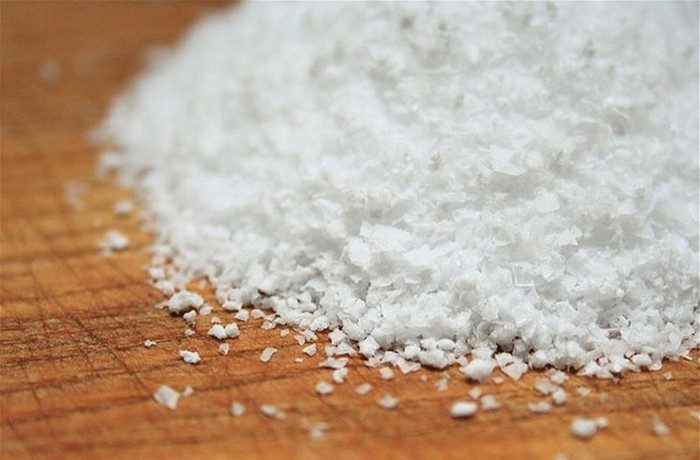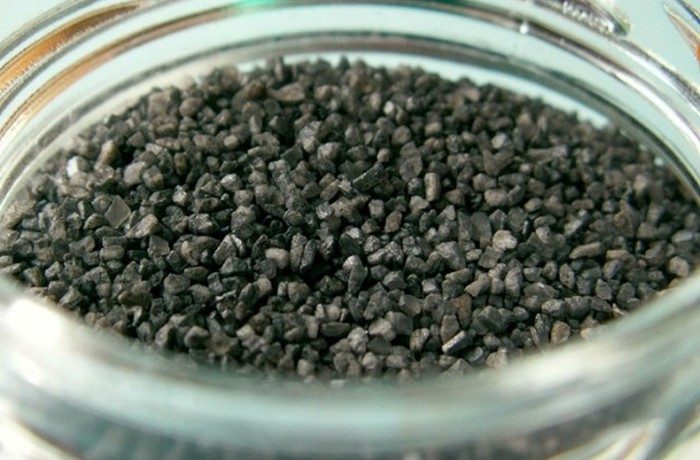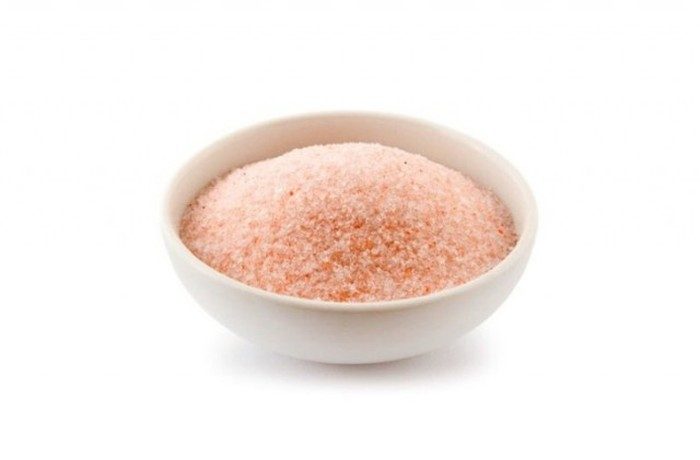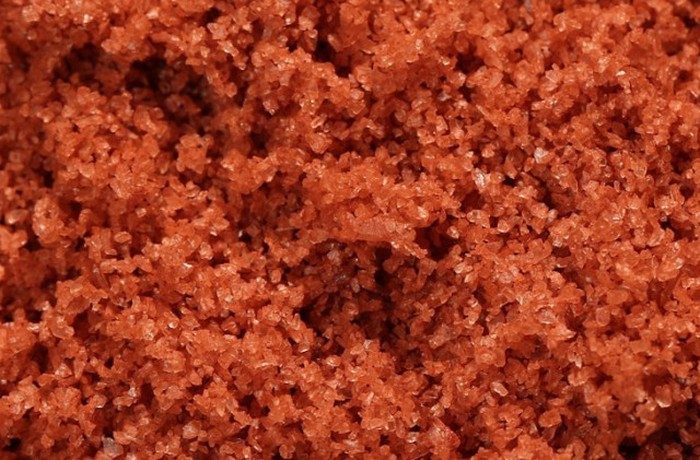Salt food types and differences. Salt in human nutrition: types, harm and benefits. Useful properties and use in treatment
Salt is the most popular seasoning, without which the preparation of most dishes is indispensable. Many of us are only familiar with the most common table salt, however, in fact, there is a large number of different types of salt.
Salt
To obtain such salt allows the method of evaporation of self-sufficient, garden or rock salt. Salt lakes melt self-sufficient salt, sea water gives us garden salt, while rock salt is mined in mines from salt deposits. Garden and sea salt have a special taste, as they contain the most minerals. Small white crystals of sodium chloride are distinguished by grades: second, first, highest and extra. The amount of sodium chloride and useful elements depends on the variety.
Kosher salt
This salt contains medium-grained crystals and is suitable for cooking meat dishes. 
organic salt
Organic salt is produced according to strict requirements. It is not easy to obtain an appropriate certificate and engage in the production of this salt. Bio-Gro marks ( New Zealand), Nature&Progres (France) and Soli Association Certified (Wales) say that you have a real product. 
black salt
Since ancient times, they have come up with a method for the production of black salt. The salt was baked to change its color. The presence of coal makes this type of salt especially useful, as it helps to remove toxins and harmful toxins from the body. 
Himalayan pink salt
This type of salt was dried in a natural way many millions of years ago. Medicinal properties salts provide 85 trace elements included in its composition. It is considered the most environmentally friendly and natural. 
Alaea Red Hawaiian Salt
The addition of clay from the veins between the hardened lava flows gives the salt its red color. In addition, salt receives even more trace elements and iron. 
Salt Fleur de Sel
This French name translates as "flower of the sea." Salt farms in Guérande are engaged in the production of this type of salt from sea water. The production technology has not changed since ancient times. Salt crystals are collected by hand, it has a particularly mild taste and is quite expensive. 
Salt Kala Namak
Possessing a specific smell, this salt is mined in the sulfur lakes of northern India and Pakistan. Salt is part of the Chat Masala seasoning, being its main ingredient. Surprisingly transforms the taste of the dish due to the sour "egg" flavor and sulfurous smell. 
Salt is probably the most important ingredient in cooking. Without it, most meals would be light and carefree. However, not all salt types are the same, and there are many grades to choose from. We can talk about Pink Himalayan Salt, Kosher Salt, Sea Salt or Celtic Salt to name a few, but then we have plain refined table salt at home.
How many types of salt are there and how does it affect health?
Not only do they differ in flavor and texture, but they also have differences in sodium and sodium. So let's talk a little about salt and explain why it's such a controversial ingredient for health experts. Salt is a crystalline mineral composed of two elements: sodium and chlorine. Sodium and chlorine are clearly important to animal life, including humans. They perform important functions, such as helping the brain and nerves send electrical impulses.
The main type of seasoning is salt , which is almost pure natural crystalline sodium chloride.
Edible table salt subdivided: By origin and method of production into: evaporation ("Extra", highest and 1st grade);
stone (highest, 1st and 2nd grades);
Red Hawaiian Salt Alaea Hawaiian Sea Salt
Most of the world's salt is extracted from salt mines, either through the evaporation of seawater or through other mineral-rich waters. Salt is used for a variety of purposes, the most common of which is to add flavor to food. Salt is also used as a preservative for food products because the bacteria have difficulty growing in the environment.
Salt is often perceived as unhealthy in large amounts because it can retain water in the bloodstream and increase blood pressure. The vast majority of sodium in the Western diet comes from. If you eat mostly whole, unprocessed foods, you don't have to worry about adding a little salt to your meals.
self-planting (highest, 1st and 2nd grades);
cage (highest, 1st and 2nd grades). By the nature of processing:
seeded;
unsown;
fine-crystalline;
unground;
ground (grindings no. 0, 1, 2, 3) ;
iodized;
fluorinated;
iodized-fluorinated. Quality by grade:
The most commonly used salt is known. This salt is highly refined. It has been heavily ground and most of the impurities and minerals have been removed. The problem with highly refined salt is that it can cake. For this reason, various substances called anti-caking agents or extreme pressure agents are added to it.
Food grade table salt is nearly pure sodium chloride, 97% or more pure. But here we have to talk about an important point: iodine is usually added to table salt. It has been a successful preventive measure against iodine deficiency, very common in many parts of the world and a leading cause of hypothyroidism, mental retardation and various health problems.
extra;
higher;
first;
second.
evaporated salt obtained from natural or artificial common salt brines, which, after appropriate treatment and purification, are evaporated, centrifuged and dried. The content of sodium chloride (NaCl) must be at least 99.7%.
So, if you decide not to take iodine-fortified salt, make sure you eat other foods like fish, dairy, eggs, and seaweed. Sea salt is obtained by evaporating sea water, and like table salt, it is sodium chloride. However, depending on where it is sourced and how it is processed, it may contain certain amounts of minerals such as potassium, iron, and zinc.
The darker the sea salt, the greater its concentration in impurities and nutrients. Sea salt is somewhat more palatable than table salt, as if you sprinkle it on top of food after it's been cooked, you can experience a different mouthfeel and cause a strong "flavor explosion".
Rock salt occurs in the form of deposits that are developed by open or closed methods. Contains few impurities and water. NaCl content - up to 99%.
self-planting salt extracted from salt lakes. Contains more impurities than rock salt.
garden salt obtained by evaporating the water of the oceans, seas, lakes, diverted into artificially created pools. This salt is characterized by a high content of mineral impurities; NaCl - no more than 77.8%.
Minerals and impurities found in sea salt can also, but this varies greatly between brands. Himalayan Pink Salt is sourced from Pakistan and comes from the second largest salt mine in the world. Himalayan salt contains a small amount of iron oxide, which gives it a pink color.
Useful properties and use in treatment
It contains small amounts of calcium, iron, potassium, and magnesium, but also contains a slightly lower amount of sodium than table salt. Many people prefer the taste of Himalayan salt over other types of salt. The main difference seems to be the color, as it can give food good view if it is sprinkled on top after it has been cooked.
Fine crystalline salt- very fine evaporated salt, completely passing through a sieve with a square section of 0.8 mm when sieved.
ground salt It can be of different origin (stone, self-planting, cage) and different grinding sizes.
unground salt there are several types: lumpy (blocky) in the form of pieces of 3-50 kg; crushed and grain should have a grain size of no more than 40 mm.
Kosher salt was originally used for religious purposes. Jewish law required that blood be drawn from an animal before it was eaten. The main difference between table salt and kosher salt lies in its structure. Chefs find that kosher salt, due to its large size, is easier to catch with your fingers and spread through your food.
Kosher salt offers a different texture, but if we allow it to dissolve into food, we won't appreciate any difference compared to table salt. However, kosher salt is likely to contain fewer additives such as anti-caking agents or iodine.
iodized salt produced for therapeutic and prophylactic purposes. To obtain it, potassium iodide is added to the fine-crystalline salt at the rate of 25 g per 1 ton and mixed thoroughly. For a more uniform distribution, potassium iodide is most often added in the form of a 1% solution. To stabilize potassium iodide, which is easily sublimating from salt, sodium thiosulfate is simultaneously added to it in an amount of 250 g per 1 ton.
Which types of salt are healthier?
Celtic salt is a salt that originally became popular in France. It has a grayish color and also contains some water, which makes it more moist. Celtic salt contains trace minerals and some common table salt. To be honest, it should be said that there is no study comparing health effects various types salt.
Application in cooking
However, if such a study existed, it would be rare for them to find any significant difference. Most types of salt are similar as they are made up of sodium chloride and a small amount of minerals. The main advantage of choosing more "natural" types of salt is that we can avoid the ingestion and anti-flake additives that are often added to table salt.
fluoridated salt produce with the addition of potassium fluoride based on the content of the mass fraction of fluorine 0.025%.
Salt defects arising during its storage are:
caking of salt into lumps or a solid monolith, occurs when the relative humidity of the air rises above 75%;
salt wetting or "leak" - the first stage of the above defect;
Various types of salt depending on their composition and qualities. Regular salt, refined salt or table salt. These are the three names that are used for the salt we all know, the most common. Its process of obtaining is to remove all of its elements except sodium chloride, that is, sodium and chloride, for the strange reason that it looks completely white, like refined sugar, which maniac man is pure white. In this process, we have lost all the minerals that sea salt contains and therefore are the least beneficial, this does not mean that it is harmful, but it does almost nothing.
foreign tastes and odors, appear due to the high content of various impurities (salt, magnesium, calcium, potassium, iron, etc.).
Salt packaging. Salt goes on sale in small and large packages and unpackaged.
Salt weighing up to 200g inclusive is packaged in bags of laminated paper, foil, cellophane and polyethylene film; weighing 200-1000g inclusive - in paper and plastic bags, in cardboard, polymer or glass jars.
Yes, it would be more harmful if its receipt and bleaching were subjected to chemical processes, but we don't know because the manufacturer is not required to tell us about it. Therefore, it is better to switch to other types of salts that you are not in doubt with. You can also usually find table salt iodide, just adding iodine to the composition, in some countries it is mandatory to add to the huge deficiency of this mineral. You can find it good, fat or semi-load, and it's refined the same way, you should notice what the container says.
It has not been improved by either mechanical systems or chemical systems, so in addition to its sodium and chloride content, it contains large amounts of minerals such as calcium, potassium, magnesium or iodine, which we have seen have tremendous benefits. You can distinguish it from the general one because it is something more grey. Like the general, we find it thin, semi-heavy, thick and in this case, it is also usually in the form of crystals or scales.
Edible table salt weighing up to 50 kg is packed in multi-layer paper bags with or without a film liner bag, in polyethylene or polypropylene bags; weighing from 500 to 1500 kg - in specialized containers designed for the transportation of bulk cargo.
Marking, which characterizes the products, is applied directly to consumer packaging by stamping, stenciling or on a label (label) attached to the packaging in any way. Salt labeling carried out in accordance with GOST R 51074-2003 “Food products. Information for the consumer” (Appendix B). The inscriptions must be clear, easy to read, without discrepancies.
What is edible salt, and which of its types is less harmful to the human body?
Most popular in recent years the best way- my. It is obtained from the mountains of Pakistan directly from the rock, there are salts that are mined from the sea, like the previous two, and others from such rocks. It is also popularized, it comes from the mines located in India, so it is a stone, in this country it is used as a remedy for stomach pains and is known among vegans if we want to give an egg flavor to some food.
It is obtained by removing the first layers of sea salt, which is a rare product, the price is high, has the shape of scales and a higher concentration of minerals than sea salt, it is a good alternative, but it is still sea salt, and it would not be a problem to stay with the last and save a few euros.
Salt storage. Salt is stored in warehouses and in open areas (in containers). Relative humidity in the warehouse should not exceed 75%.
The shelf life of salt without additives, packed in packs with an inner bag and in cardboard packs - 2.5 years, in packs without an inner bag - 1 year, in plastic bags - 2 years, in paper bags with a polyethylene liner, polyethylene and polypropylene woven - 2 years, in containers without liner - 1 year, in containers with a polyethylene liner - 2 years, in polymer jars - 2 years, in glass jars - 5 years.
It is nothing but sea salt, naturally sun-dried and harvested by hand, thus being more stable minerals and without compromising industrial processes. Again, sea salt would be fine. Very popular throughout Europe, associated with haute cuisine, it is sourced from the mouth of the Blackwater River in England. Traditional and manual harvesting methods are also used. Its composition is similar to common salt, although its scale is estimated, since it is canceled when in contact with hot foods or liquids, you must be careful because its purity is greater and therefore has a greater amount of sodium.
The shelf life of salt with iodine additives is 3 months, iodine and fluorine - 3 months, fluorine - 6 months from the date of production. After the specified shelf life, the salt is sold as salt without additives.
Salt quality assessment carried out by organoleptic, physicochemical and microbiological methods.
Organoleptic methods in table salt evaluate appearance, color, taste and smell.
Probably many people know, perhaps in addition to the normal salt that they put every day on the table, on the sea. And for many, our knowledge doesn't go much further. But the truth is that there are hundreds of types of salt that are used different ways for cooking and with different effects. Maybe it's better to start with the basics.
When sodium atoms combine with chlorine atoms, sodium chloride is formed, which we simply know as a salt. Sodium and chlorine are abundant elements in nature but never found alone, together they create the mineral. Crystals are often mixed with other minerals which affect their coloration and of course their chemical composition. Because the bond of sodium and chlorine creates an almost perfect cubic crystalline form. The fascinating thing about this is that no matter how the salt is broken, it breaks into smaller pieces, always cubic.
Definition appearance and degree of grinding salt is carried out visually.
For inspection, 0.5 kg of salt is scattered in a thin layer on a clean sheet of paper or a cleaned surface and the presence of impurities, as well as color, is determined.
Color salt " extra" should be white and salt 1st and 2nd grades- white with shades (grayish, yellowish, bluish) depending on the composition of mineral impurities.
From water and rocks, and collected from them all over the world. When fresh water descends from the mountains and through the riverbed, it collects and carries with it several elements that mix and can form different kinds salt and other minerals and rocks found in nature.
The world's oceans have existed for billions of years, but scientists believe that the salinity of the oceans has increased over time due to volcanic activity. Chlorine is a volcanic gas, while sodium is found in igneous rocks. Therefore, all volcanoes and flaws that are at the bottom of the ocean are constantly adding chlorine and sodium is in the ocean. This mineral makes up about three percent of ocean water. Sea salt is collected and purified through the usual practice of evaporating the Sun.
Salt should be free of visible impurities.
Smell salt is determined after grinding 20 g of salt in a porcelain mortar at a temperature of at least 15 ° C. Pure salt should not have a smell.
Taste salts are determined in a 5% aqueous solution, for which 5 g of salt is dissolved in 100 cm 3 of distilled water at a temperature of (15-25) 0 C. Edible table salt should have a purely salty taste without extraneous aftertastes. Iodized salt has a slight smell of iodine.
The organoleptic properties of salt are negatively affected by the increased content of mineral impurities.
So, magnesium and calcium salts give it excessive hygroscopicity. high salt gland, used for salting fat-containing products, forms rusty or brown spots. Calcium gives the salt a coarse alkaline taste. Magnesium gives bitterness. When using salt with a high content of potassium, a sore throat (scratching taste), nausea and headache are observed.
From physical and chemical indicators in edible salt is determined mass fraction of sodium chloride, mass fraction mineral impurities(calcium ion, magnesium ion, sulfate ion, potassium ion, iron oxide, sodium sulfate), mass fraction insoluble residue, mass fraction moisture and solution pH(for salt "Extra").









